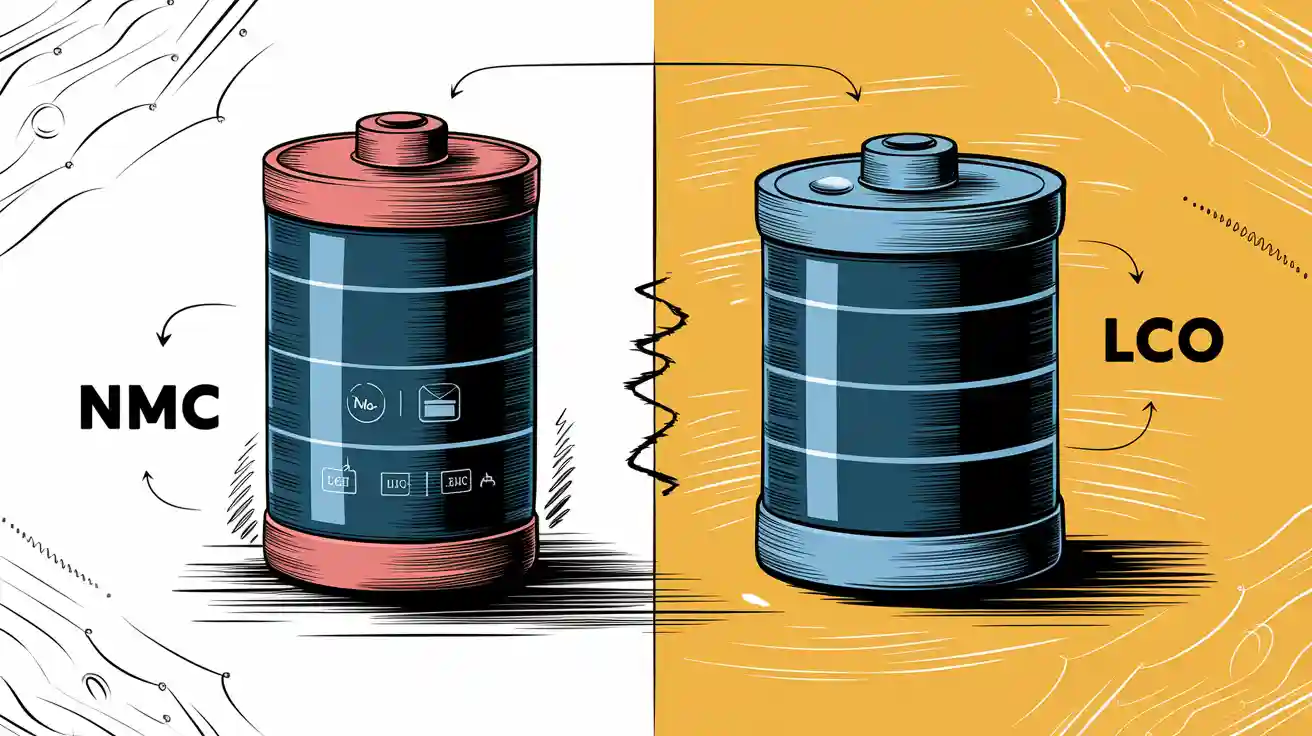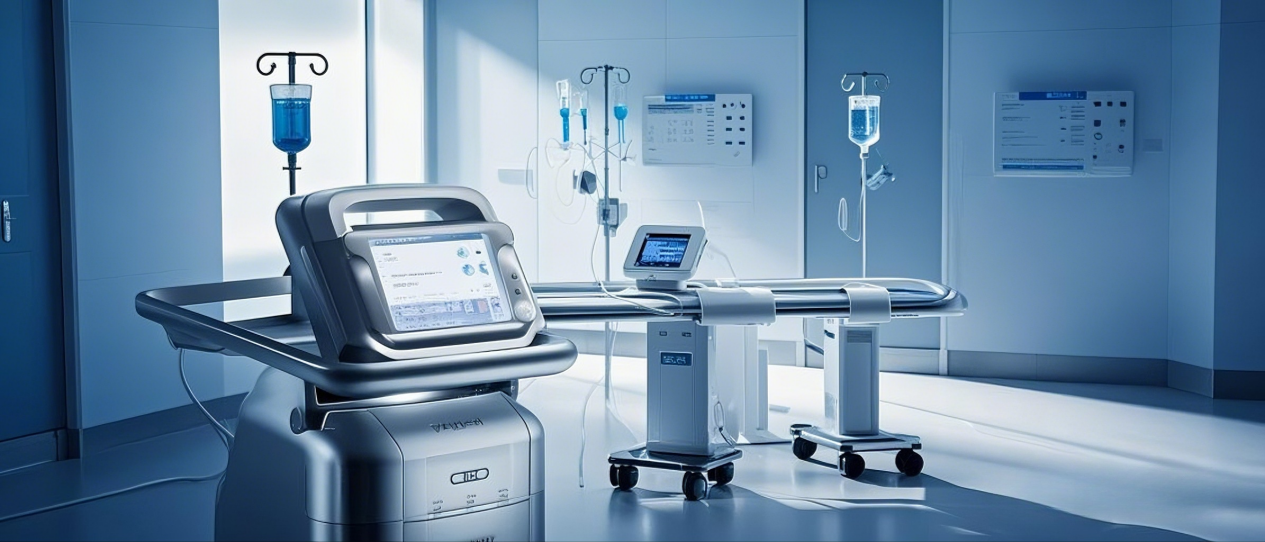
In the comparison between NMC and LCO battery technologies, the differences in chemical properties and performance are significant. NMC batteries use a ternary composite cathode material composed of nickel, manganese and cobalt, balancing multifunctionality and durability; LCO batteries, on the other hand, are centered on lithium cobalt oxide, emphasizing high volumetric energy density and stable voltage platforms. These differences determine their varied application scenarios—from medical devices to portable electronics—each technology being designed for specific needs.
Key Takeaways
- NMC batteries are suitable for medical devices that require longer cycle life. NMC batteries have a longer lifespan and better thermal stability.
- LCO batteries are great for portable electronics. LCO batteries have a higher volumetric energy density, but their lifespan is relatively shorter than that of ternary batteries.
- Pick the right battery based on your needs. Use NMC batteries when high-quality energy density and long cycle life are required, and LCO batteries for small daily devices.
Part 1: Chemical Composition of Lithium-Ion Batteries

Understanding the chemical composition of lithium-ion batteries is essential to grasp their performance and applications. Each type of battery has unique materials that influence its energy density, safety, and lifespan.
Lithium Nickel Manganese Cobalt Oxide (NMC) Battery
NMC batteries use a cathode made from nickel, manganese, and cobalt oxides. By incorporating different combinations of these elements, energy density, cost, and thermal stability are enhanced. The anode is usually composed of graphite, which is common in lithium-ion batteries. With a specific energy advantage of 150-300 Wh/kg, it is an ideal choice for security systems and medical devices. Its multifunctionality and stability stem from the synergistic effect between the high energy density of nickel (Ni²+/Ni³+), the thermal stability of manganese (Mn4+), and the structural integrity of cobalt (Co3+).
Lithium Cobalt Oxide (LCO) Battery
LCO batteries rely on a cathode made primarily of lithium cobalt oxide (LiCoO₂). LCO batteries typically have a gravimetric energy density of 150-220 Wh/kg, and their cycle life is somewhat shorter compared to NMC batteries. LCO batteries have a nominal voltage of 3.7V, with a higher voltage platform, and each battery operates in a range of 3.0-4.2V. Although the thermal stability of lithium cobalt oxide is relatively poor, its high volumetric energy density makes it suitable for portable electronic devices, critical communication equipment and mobile printers.
Key Structural Differences Between NMC and LCO
The performance differences between NMC and LCO batteries mainly stem from differences in their internal key structures. NMC batteries, through the synergistic action of nickel, manganese, and cobalt, provide better thermal stability and a longer cycle life. In contrast, LCO batteries, composed of lithium cobalt oxide, have a slightly lower energy density and poorer thermal stability.The table below highlights these differences:
| Feature | NMC | LCO |
|---|---|---|
| Chemical Composition | Nickel, manganese, cobalt | Lithium cobalt oxide |
| Energy Density | Higher | Slightly lower |
| Cycle Life | Longer | Shorter |
| Thermal Stability | Better | Less stable |
| Safety | Higher | Lower |
| Applications | Security systems and medical devices | Portable electronics, critical communication devices and portable printers |
These differences make NMC batteries more versatile, while LCO batteries remain a top choice for portable electronic devices.
Part 2: Performance Characteristics of NMC vs LCO Battery
Energy Density and Output Power
Energy density is a key indicator that determines the energy storage capability per unit mass of a battery. NMC batteries strike a balance between energy density and output power, usually achieving an energy density of 150-300 Wh/kg, which makes them suitable for applications requiring high power and long-lasting endurance. LCO batteries achieve an energy density of 150-220 Wh/kg, and their stable voltage platform makes them ideal for portable electronic devices. However, their output power is generally lower, which limits their use in high-power and long-endurance scenarios such as electric vehicles. If prioritizing lightweight and compact design, LCO batteries may be a better choice; for high-power applications, NMC batteries can provide a more comprehensive solution.
Tip: If you prioritize lightweight and compact designs, LCO batteries might be the better choice. For high-power applications, NMC batteries provide a more versatile solution.
Cycle Life and Longevity

A battery’s lifespan depends on its ability to maintain discharge capacity over repeated charge-discharge cycles. NMC batteries outperform LCO batteries in this regard, enduring thousands of cycles, making them more suitable for batteries in medical devices and robotics that require long cycle lives. Although LCO batteries exhibit excellent initial performance, their shorter operating cycle makes them more appropriate for compact handheld devices rather than scenarios requiring long-term or frequent use.
Thermal Stability and Safety
Thermal stability is a critical factor in the safety of lithium-ion batteries. NMC batteries, due to the doping of manganese ions in the nickel-manganese-cobalt mix, demonstrate better thermal stability, reducing the risk of thermal runaway under high temperature or high load conditions. Although LCO batteries store energy efficiently, their thermal stability is relatively poorer compared to NMC batteries, limiting their safety performance in high-temperature environments.
Charging Speeds and Efficiency
NMC batteries support high-rate charging, making them suitable for scenarios that require fast charging. Due to the layered structure of lithium cobalt oxide in LCO batteries, the kinetics of lithium-ion deintercalation between layers is slower, which limits the total amount of lithium ions that can be intercalated per unit time. Therefore, charging time is longer, which might be a drawback for users needing fast charging.
Part 3: Applications of NMC and LCO Battery
Common Uses of NMC Battery

NMC batteries are widely used in scenarios that require high energy density and long cycle life, including outdoor security cameras and medical devices. Their long cycle life and thermal stability make them an ideal choice for high-demand environments.
Note: NMC batteries are a versatile choice for applications that demand both power and longevity.
Common Uses of LCO Battery
Thanks to their lightweight design and high volumetric energy density, LCO batteries perform excellently in portable electronic devices, critical communication equipment, and mobile printers. However, their short cycle life and poor thermal stability limit their use in high-power scenarios.
Part 4: Advantages and Disadvantages of NMC vs LCO Battery
Pros and Cons of NMC Battery
Pros: Balanced energy density, output power, and safety, excellent thermal stability, and long cycle life.
Cons: The volumetric energy density is slightly lower than that of LCO batteries, which may limit the available space for devices.
Pros and Cons of LCO Battery
Pros: Outstanding volumetric energy density and lightweight design.
Cons: Shorter lifespan, poorer thermal stability, and potential safety hazards in high-temperature environments.
Choosing the Right Battery for Your Needs
Selecting between NMC and LCO batteries depends on your specific requirements. If you need a battery for high-power applications like robotics, NMC batteries provide the best balance of performance and safety. Their longer lifespan and superior thermal stability make them a reliable choice for demanding environments.
For portable electronics, LCO batteries remain unmatched. Their high volumetric energy density and lightweight design make them perfect for devices where size and weight are critical. However, consider the shorter lifespan and potential safety risks when using these batteries in high-stress conditions.
The table below summarizes key criteria to help you decide:
| Criteria | NMC (Nickel Manganese Cobalt) | LCO (Lithium Cobalt Oxide) |
|---|---|---|
| Energy Density | Higher energy density | Lower energy density |
| Power Density | Good power density | Lower power density |
| Cycle Life | Longer lifespan | Shorter lifespan |
| Thermal Stability | Good thermal stability | Moderate thermal stability |
| Safety | Generally safe | Safety concerns in high temperatures |
| Cost | Lower cost | Higher cost |
Tip: Evaluate your energy needs, safety priorities, and budget to choose the right battery for your application.
NMC and LCO batteries cater to different needs based on their unique properties. NMC batteries offer versatility and durability, making them a reliable choice for high-power applications like robotics. Their longer lifespan and faster charging capabilities enhance their appeal. LCO batteries, with their superior energy density, excel in portable electronics. Choosing the right battery depends on your energy requirements, safety considerations and budget.
FAQ
1. How do you decide between NMC and LCO batteries for your application?
- Consider your energy needs:
- NMC: Best for applications like robotics, medical devices or security cameras.
- LCO: Ideal for portable electronics requiring lightweight and compact designs.
Tip: Evaluate safety, cost, and lifespan before making a decision.
2. Are NMC batteries safer than LCO batteries?
Yes, NMC batteries offer better thermal stability and safety. Their composition reduces overheating risks, making them suitable for high-stress environments like robotics.
3. Why do LCO batteries have a shorter lifespan?
LCO batteries degrade faster due to their chemical structure. Frequent charge-discharge cycles reduce their capacity, making them less durable than NMC batteries.
Note: Proper usage and charging practices can extend their lifespan.




